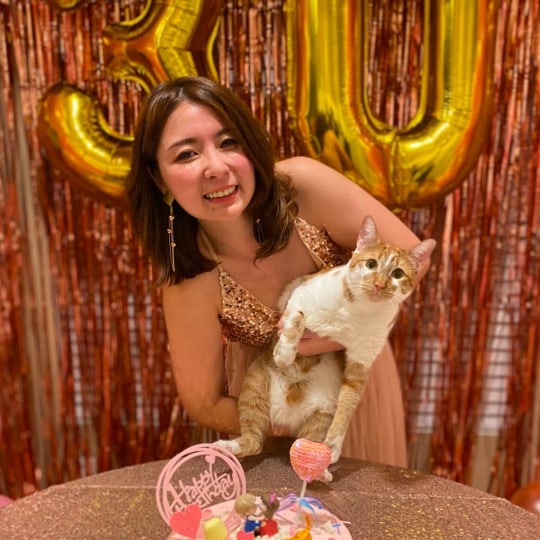Eye Drops for Kids
Eye drops are a versatile treatment tool. Eye drops can help relieve various eye symptoms, from dry eye to eye infections. Although the delivery method may seem simple, it can be tricky for some people to use eye drops. We blink when an object approaches to protect our eyes—even when that object is a liquid droplet.
Most adults can learn to keep their eyes open or find other strategies to use eye drops effectively. But it can be more challenging to convince kids to avoid blinking or flinching away.
Eye drops are available for children, but not all eye drops are made for kids. While some over-the-counter products are safe for short-term use, discussing long-term use at a children’s eye care appointment is crucial.
Are Eye Drops Safe for Kids?
The safety of using eye drops in children depends on various factors such as the child’s age, medical history, and the specific type of eye drops being considered. Typically, safe choices for children’s eye drops include artificial tears, antihistamines, and low-dose atropine drops.
Common uses for kids eye drops include:
- Allergies
- Dry eyes
- Eye infections
- Myopia control
If you’re unsure what eye drops you child can or cannot use, talk to your eye doctor.
Allergies
Antihistamine eye drops help treat allergy symptoms by reducing histamines, the body’s natural response to allergens. Antihistamine eye drops can help relieve:
- Irritated or itchy eyes
- Puffiness or swelling
- Redness
- Teary eyes
Some decongestant eye drops also contain antihistamines. However, not all decongestants are appropriate for relieving eye allergies.
When selecting over-the-counter allergy eye drops, ensure the appropriate dosage for their age. Check the label or ask a pharmacist or your optometrist if you’re unsure. Your child’s optometrist can also offer more solutions for eye allergy relief.
Dry Eyes
Artificial tears or lubricating eye drops can provide short-term relief for dry eye. Although chronic dry eye is more common in older adults, dry eye symptoms can occur at any age.
Dry eye in children is rare, but it can be overlooked because children may not understand the symptoms they’re experiencing. For example, kids with dry eye may describe their eyes as feeling hot or like there’s sand or dirt in their eyes.
Dry eye can also cause:
- Blurry vision
- Light sensitivity
- Redness
- Watery eyes
- Stringy mucus
Using over-the-counter artificial tears for your child is safe short term. However, lubricating eye drops treat the surface-level problem, not the cause. Therefore, discussing their symptoms with their optometrist is crucial for finding long-term treatment.
Eye Infections
Antiviral, antifungal, and antibacterial eye drops or ointments can help treat common eye infections, like conjunctivitis(pink eye), keratitis, or styes. An optometrist can prescribe the appropriate treatment after assessing your child’s eye health.
Diagnosing an eye infection is crucial to prevent spread and help reduce the risk of complications.
Myopia Control
Atropine drops have a few clinical applications, from dilating pupils for eye exams to treating eye problems in children. Low-dose atropine eye drops are a method for slowing the progression of myopia (nearsightedness).
People with high myopia are at a greater risk of developing eye problems, including cataracts, glaucoma, and myopic macular degeneration. Children with an increased risk of progressive myopia can benefit from myopia control as early prevention can reduce their risks later in life.
Visine for Kids
You may be wondering, can kids you Visine eye drops?
Visine offers eye drops called “Visine for Kids” that are specifically formulated for children. These eye drops are designed to provide relief from minor eye irritations, such as redness and dryness, that are common among children. Visine for Kids eye drops are generally considered safe for children when used as directed and under adult supervision.
However, it is always advisable to consult with your eye doctor before using any medication, including eye drops, to ensure it’s suitable for your child’s specific eye care needs.

How to Give Your Child Eye Drops
If your child isn’t old enough to use eye drops themselves or too nervous, parents can assist in applying the eye drops.
- Wash your hands to avoid introducing bacteria into the child’s eyes.
- Ensure your child is in an appropriate position. Tell them to look up, slightly to the side, as this can help direct the eye drops away from your child’s nose.
- Place the wrist of the hand you’ll use on your child’s forehead. Placing your hand helps position your child and stabilizes your hand.
- Bring the dropper close, approximately one inch above your child’s eye.
- Finally, release the drop close to the lower eyelid but away from the tear ducts (the inner corner of the eye).
It’s normal for a child to be nervous or hesitant about using eye drops, especially for the first time. If you’re having trouble getting them to sit still, try these tips:
- Demonstrate: Explain the process and demonstrate by using eye drops on yourself or your child’s favorite toy. If the eye drops are medicated, you may substitute using water instead of the prescribed eye drops.
- Distraction: Distract your child with their favorite things, such as playing a song or show in the background. They may also feel more comfortable holding their favorite stuffed animal, fidget toy, or blanket.
- Try laying down: If your child can’t stay still, they may be more comfortable laying down, and you can gently hold their head in place to apply the drops.
- Hold hands: Have another parent, sibling, or family member hold their hand. Holding their hands can be comforting, and it can also encourage them to be less fidgety. Remind them that staying still helps get the experience over with quicker.
- Make it positive: If the experience is upsetting to your child, reward them with a cuddle, praise, or a fun activity after completion. Associating the experience with something positive can make it easier the next time you need to give them eye drops.
Discuss Before You Drop
While many artificial tears and eye drop products are safe for children, it’s best to talk to your child’s optometrist first. We can assess their eye health and determine the cause of their symptoms to prescribe appropriate treatment. We can also recommend alternative treatments for kids who are squeamish about eye drops.
Our friendly eye care team and optometrists at Eye Lab in Scottsdale can help make your child’s next visit comfortable. So book an appointment to discuss their eye health today!




